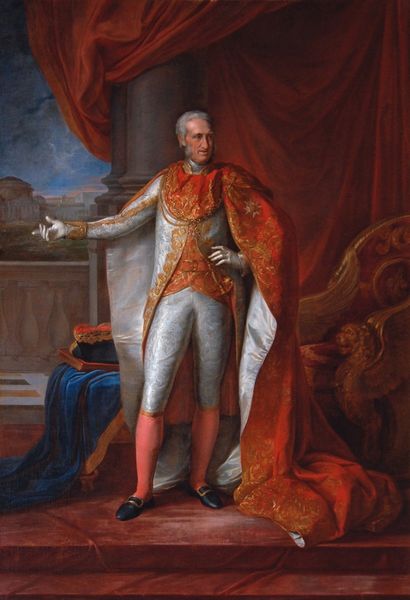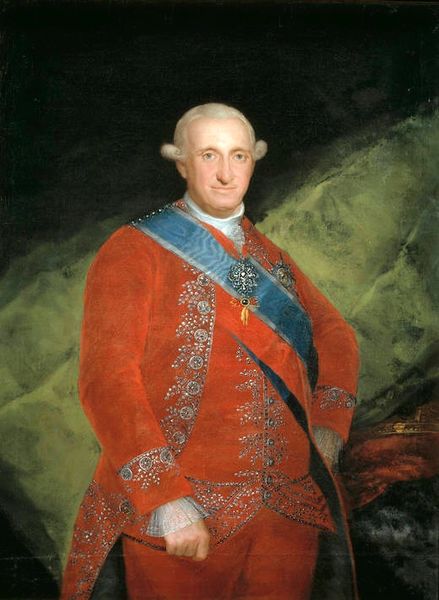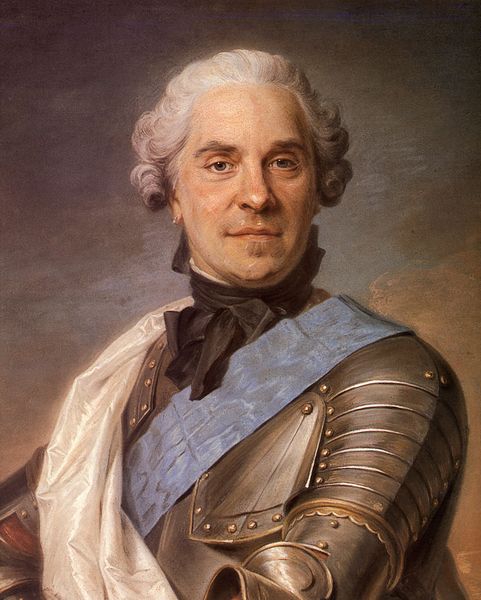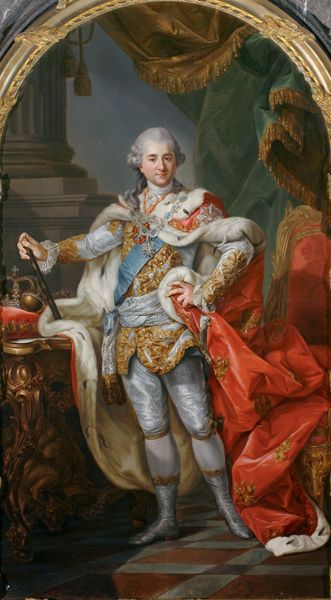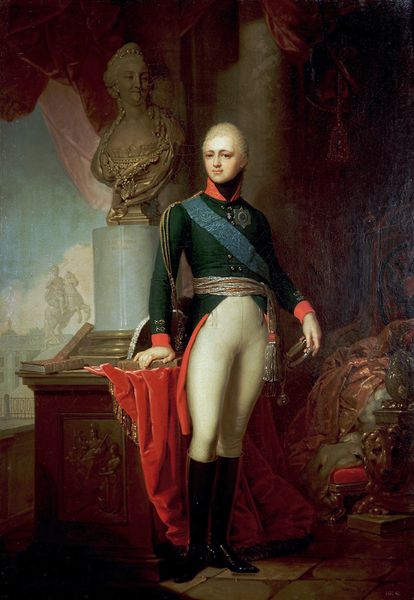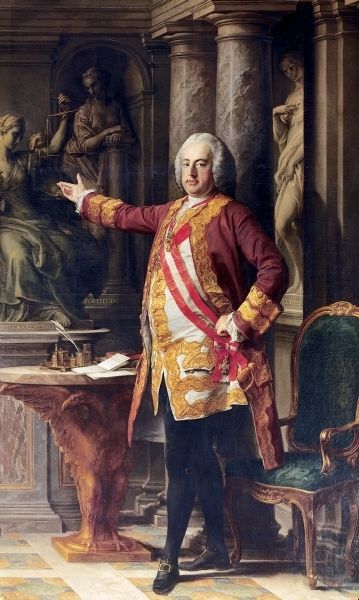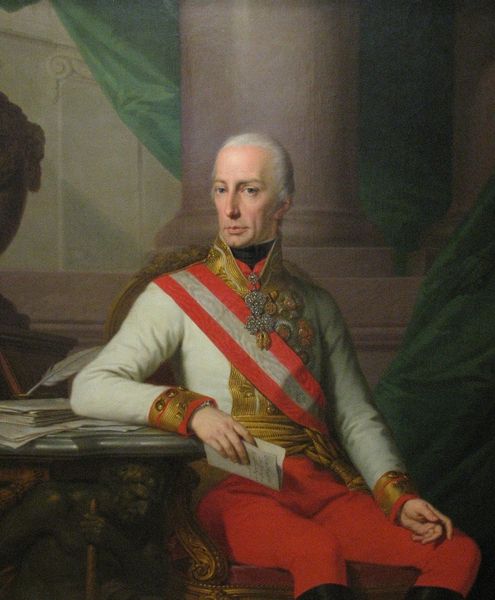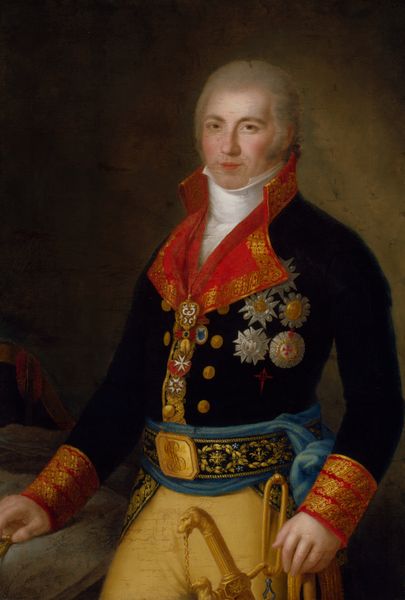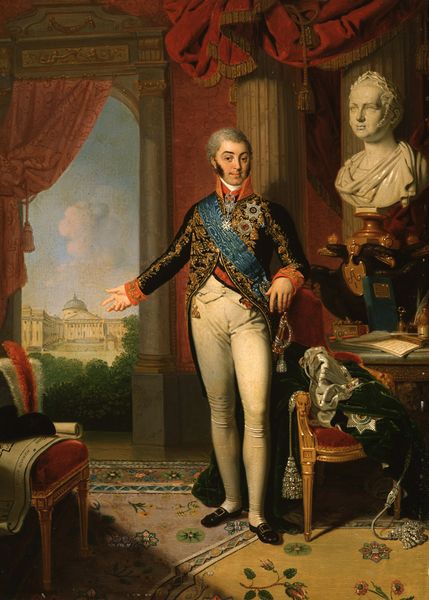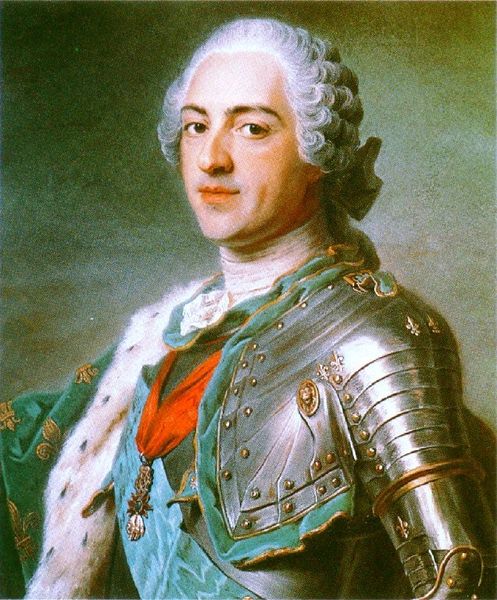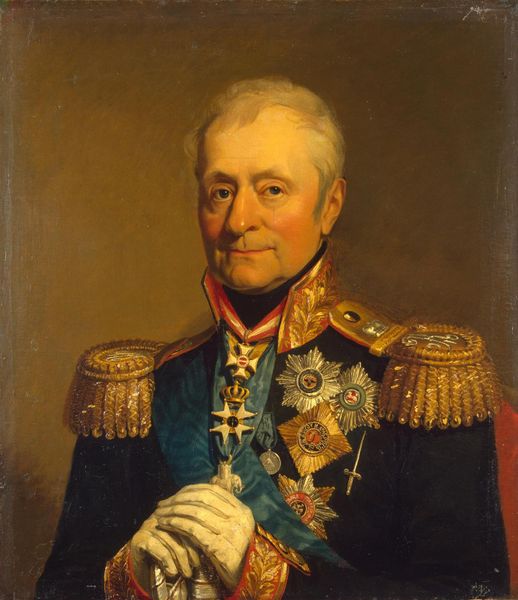
painting, oil-paint
#
portrait
#
neoclacissism
#
character portrait
#
painting
#
oil-paint
#
oil painting
#
classicism
#
history-painting
#
academic-art
Copyright: Public domain
Francisco Bayeu y Subias painted this portrait of Charles IV in Spain during a time of significant social and political upheaval. The image presents a vision of absolute monarchy, echoing earlier royal portraiture. Charles is adorned with emblems of power, meant to convey authority and divine right. But the portrait also comes across as somewhat banal; Charles appears as an ordinary man caught in the trappings of royalty. The late 18th century was marked by the Enlightenment, the French Revolution, and the rise of republican ideals. The painting's adherence to tradition could be seen as a conservative statement. It is attempting to reinforce the legitimacy of the Spanish monarchy amidst revolutionary fervor. To fully grasp this artwork, we need to research the prevailing social and institutional contexts. By examining historical documents, political writings, and art criticism of the time, we can better understand the complex relationship between art, power, and society.
Comments
No comments
Be the first to comment and join the conversation on the ultimate creative platform.
